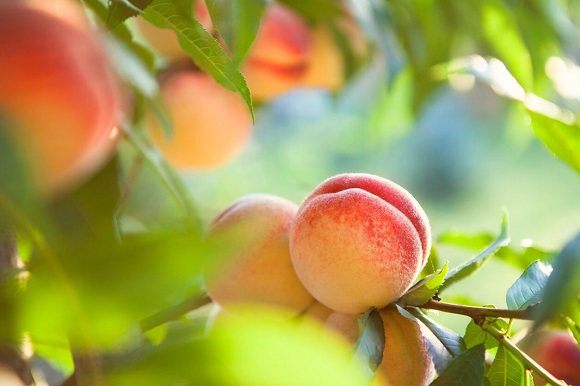
There’s nothing quite like sinking your teeth into a perfectly ripe, juicy peach straight from your own backyard tree. It’s like a little taste of heaven, isn’t it? I planted peach trees a few years ago, and am anxiously awaiting my first harvest, but I’ve spent summers in our local orchards, and even ordering them directly from Georgia! And August, oh man, it’s prime peach season! If you have a peach tree, your tree is probably loaded with sweet, golden delights begging to be picked.
But here’s the thing: as much as we want to savor every last bite of those delicious peaches, we’ve got to start thinking ahead to the colder months. I know, I know, it’s still summer, and the last thing you want to think about is winter, but trust me, your peach tree will thank you for being proactive.
First things first, when you’re planting your peach trees, make sure you choose a variety that can handle the winter in your neck of the woods. Some trees are tougher than others, so it pays to do your homework. Generally, peach trees can tough it out in USDA zones 5-8, but it depends on the specific variety.
Now, let’s talk about harvesting those beauties. You want to look for peaches that have a deep, rich color and give a little when you give them a gentle squeeze. Keep a close eye on your tree during this time because peaches can go from not-quite-ripe to over-ripe in a blink! Gently twist the peach to pluck it from the branch, and be extra careful not to bruise that delicate skin. If you want to save some for later, pick them when they’re still a bit firm and let them ripen on your counter.
Once you’ve devoured the last of your peach haul, it’s time to get your tree ready for the cold. Start by clearing away any peaches that fell to the ground – those can be a magnet for pests and diseases that could spell trouble for your tree. Keep watering your tree through the fall, but don’t overdo it. You want the soil to be moist but not soggy.
When the leaves have all fallen, and the air starts to get crisp, it’s time to really get to work. Here’s my tried-and-true winter prep routine so far, and what I’ve learned from my fellow peach-growers.
- Mulch it up! Spread a nice, thick layer of organic mulch (I like straw or wood chips) around the base of your tree. This will help keep the roots cozy, hold in moisture, and keep the soil temperature steady.
- Ease up on the fertilizer. Stop feeding your tree about 6-8 weeks before the first frost is expected. If you give it too much nitrogen late in the season, it can encourage new growth that won’t survive the cold.
- Water wisely. Make sure your tree gets a good drink before winter sets in, but don’t go overboard. Too much water can lead to root rot, and that’s no good.
- Protect those young’uns. If you have a young tree with thin bark, consider wrapping the trunk or using a tree guard to prevent sunscald and frost cracks. Just remember to take the wrap off in early spring, so you don’t trap moisture against the bark.
- Prune like a pro. Wait until late winter, just before the buds start to break, and give your tree a good pruning. Cut out any dead, damaged, or diseased branches to keep your tree healthy and strong.
- Keep an eye out for damage. After the cold has passed, give your tree a good once-over. Look for signs of damage like dead buds, split bark, or dieback. Prune out any problem areas to help your tree bounce back.
And if you live somewhere prone to late spring frosts, be ready to protect those delicate blossoms! You can cover the tree with a frostcloth or set up sprinklers to create a protective ice layer around the blooms.
Now, with all this winter prep talk, don’t forget to enjoy the fruits of your labor! Peaches are amazing fresh off the tree, but they’re also fantastic in pies, cobblers, jams, you name it. I like to freeze or can some of mine so I can keep savoring that summer sweetness well into the colder months. Trust me, there’s nothing like a taste of summer peach jam on a dreary winter morning.
So there you have it, my friend. With a little love and attention, your peach tree will be ready to weather the winter and come back strong for another amazing harvest next year. Enjoy every last bite of those sweet, juicy peaches, and know that you’re setting your tree up for a bright, delicious future!
Do you want to grow your own peaches? With our Perfect Peaches Gardening Guide, you’ll have everything you need to know about growing and enjoying this delicious fruit.
What other tips would you add for keeping peach trees safe over late fall and winter?


 Previous
Previous


Need more details on pruning peaches, as well as apricots and plums. I know they should be pruned differently, but I don’t know the details. Please help
For all 3 you want to cut out any dead, damaged, or diseased branches to keep your trees healthy and strong. You also want to remove any crossing branches. Peaches need the heaviest pruning because they tend to produce fruit on new growth. Apricots and plums prefer a lighter pruning but appreciate a tree with an open structure – so go ahead and remove some of the unnecessary branches from the center of the tree.